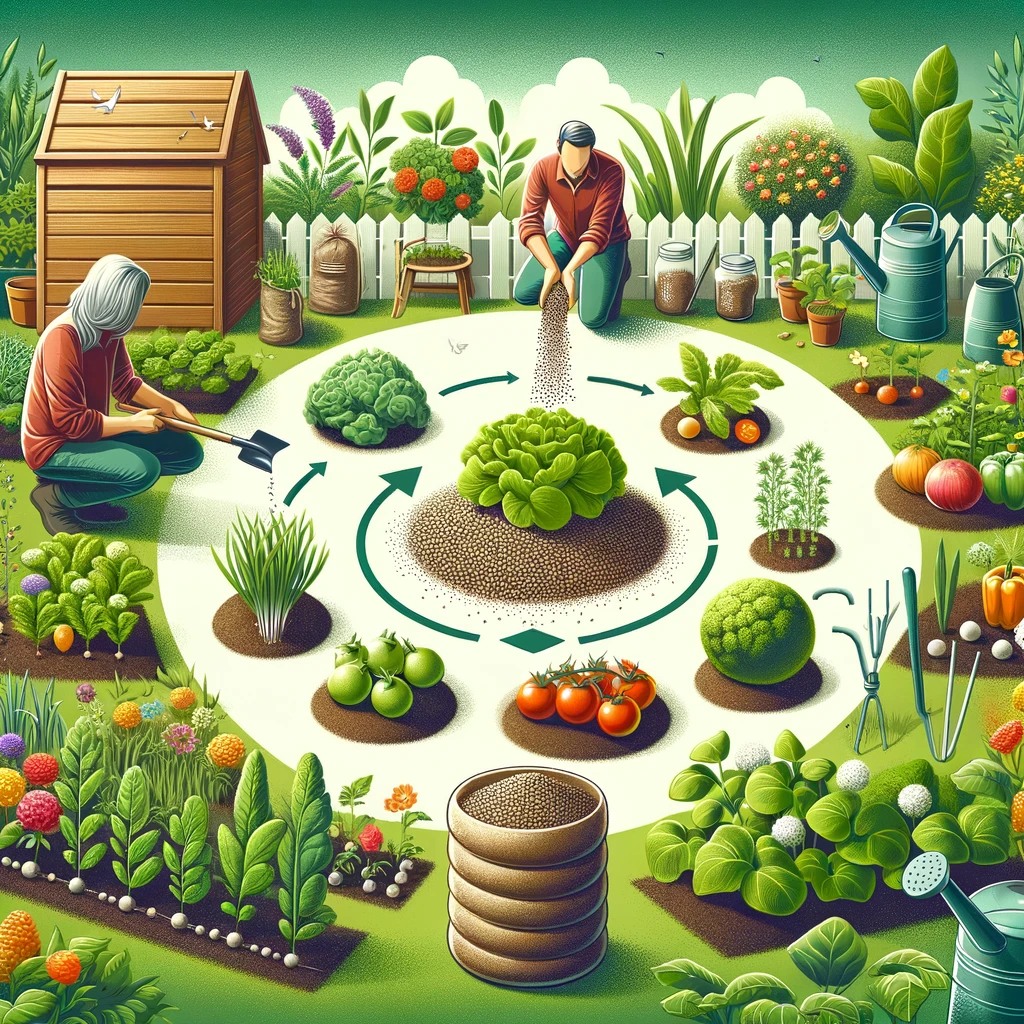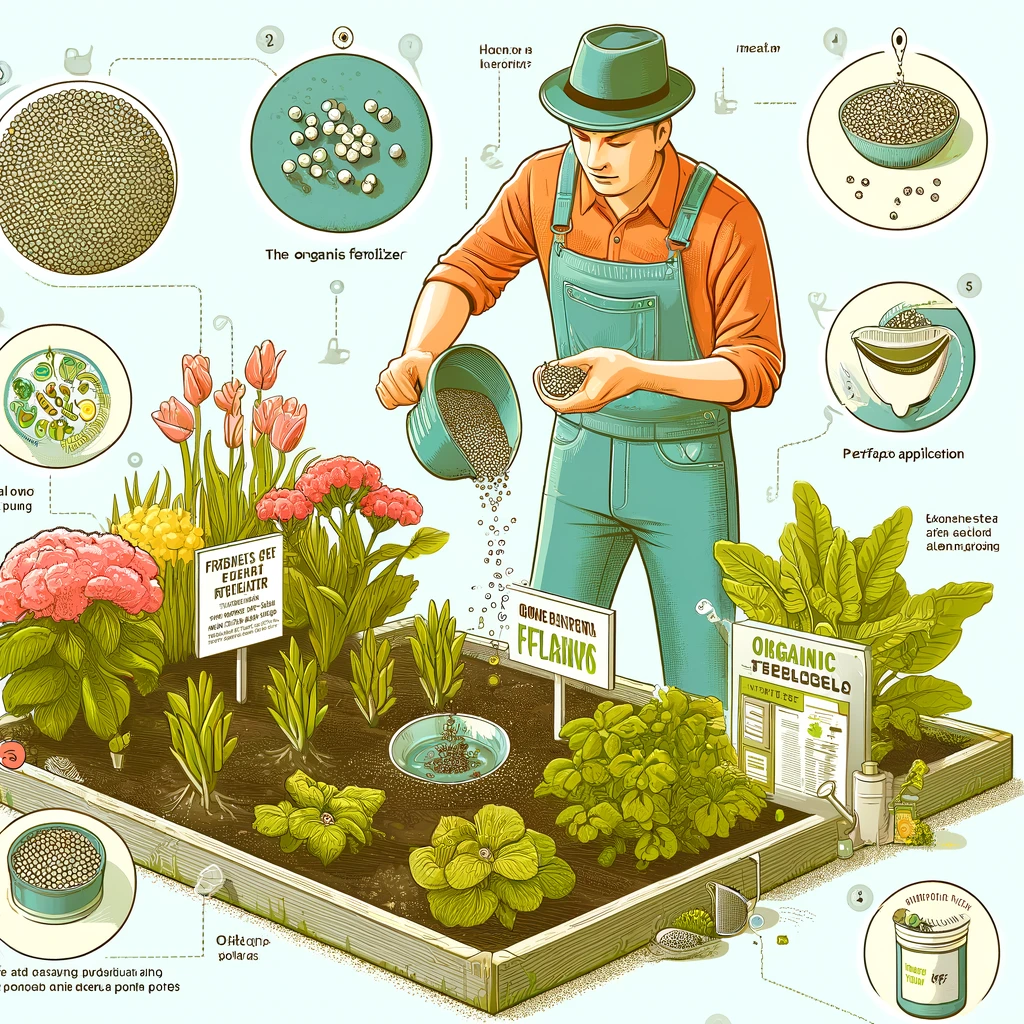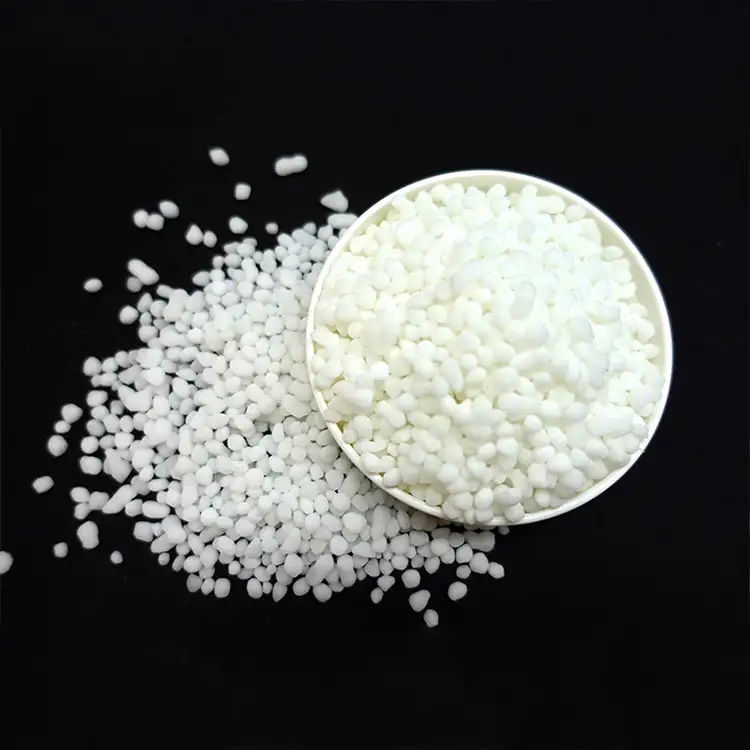Introduction to Organic Fertilizer Pellets
The organic fertilizer pellets are made of organic matter compressing, it is a kind of slurry by combining the organic fertilizer and water that dissolves, adopts the technique of pressure machine, decompresses within a certain temperature and a certain pressure, presses the runny materials into granules. It has not burned and a chance of heating, going through the granulation. Organic fertilizer has laminar structure and water-retaining ability according to the character of organic fertilizer and fertilizer medium.
At present, organic fertilizer pellets are the most generalised one in the agricultural fertilizer. It has high water and fat content on cow manure, the process of fertilizer-processing plant is longer, easily producing putrid smell, it is more convenient for transportation, storage and transporting.It is a kind of compact fertilizer, it is easy to use and becomes one of the strategic resources of sustainable agriculture.
On one hand it protects plants from being destroyed by several diverse diseases in the growth process; on the other hand, it improves the curative effect and operability of the medicine to some extent.According to the dosage of each type of fertilizer sprayed, the petrol can be replaced by using can. When it paints the roots of plants, the skin can also be used to irrigate the medicine.
There are significant advantages in using fertilizer pellets derived from natural or organic sources, such as manure or other resources as opposed to synthetic fertilizers. According to Doctor Helen Carter, a specialist in organic agricultural methods, organic fertilizers, such as fertilizer pellets, which release nutrients slowly over time, provides a big benefit in reducing the risk of nutrient runoff, and thus limiting the impact of fertilizer discharge into surrounding environments.
This slow release of nutrients is not only advantageous in that it provides nutrition in a way that is safer for plants to absorb but also causes improved soil health and is a very important aspect of these pellets. Soil quality is improved through the incorporation of fertilizer pellets as they improve the activity of microbes which is an essential part of maintaining soil structure and fertility.
Organic fertilizer pellets benefit both the plants and the environment by supporting the health of plants without negatively affecting human health and the ecological environment. Using these pellets supports organic farming and provides practical help for eco-friendly green gardeners and eco-agricultural farmers, allowing them to cut down their use of chemical fertilizers and pesticides to reduce their chemical footprint and adopt more eco-friendly practices.
Benefits of Using Organic Fertilizer Pellets
The organic fertilizer pellets have played an important role among the gardeners not only for their practical usage, but also for ecological requirement.
Organic fertilizer pellets not only improve fertility of plants, but also reduce pollution considerably. The widely-used traditional chemical fertilizer of nitrogen is one of the keys sources of synthetic chemical pollution. When applying chemical fertilizer on land, some will be metabolized or respirated by soil microbes and plants. Other portion will penetrate into land and be washed away. Along the process, various toxic agents such as nitrates, salt and ammonia will be produced and contaminated into water channels.
Unlike chemical fertilizer, organic fertilizer can be applied on the land with no residual toxicity because it will be respired or consumed by soil microbes and plants. Based on the latter one state, during rainy season, the drainage water from fertilised land can be used as fertilizer, by which drainage water itself becomes a growth factor or a means. The likelihood of this happening is much higher than drawing quicksand because the organic fertilizer pellets not only add soil nutrients to grow plants fertilisation, enhance water retention function and promote fertility of excellent land.
In addition to this, due to their consistent granulation, organic fertilizer pellets are easy to handle and apply. Sometimes enthusiastic gardeners want to increase organic fertilizer lawn fertilisation when it’s too late. However, they failed because rainfall disintegrated them into small particles or residues left after surface burying.
Steady Nutrient Release: One of the major advantages of organics stem from the steady release of nutrients, which basically takes the stress off the plants. Normal synthetic fertilizers might deliver an abundance of nutrients to plants, but they might release all of it all at once, leaving nothing for the soil to work with later in the season. Additionally, the often rinsed-off excess can leach into the Earth’s waterways. ‘Pellets are a slow release of nutrients, and that ties right into how the plant actually grows and how it takes in nutrients,’ Forrest, the Alabama soil scientist adds. ‘It’s more natural because in the native environment, plants are taking in food from organic material that’s decomposing.
Convenience: Especially because they are solid and of uniform shape and size, pellets are easier to apply to their target and to apply equal amounts, reducing the risk of overuse and providing more consistent fertilizer across larger areas or for potted plants.
Environmental: In contrast to synthetic fertilizers, the creation of organic fertilizer pellets has much lower environmental challenges. Not only are they formulated from natural materials and thus do not involve high amounts of chemical processes with substantial fossil fuel use (as is the case with synthetic fertilizers), their slow release effectively removes the risk of nutrient runoff to waterways, a problem associated with fast-acting synthetic fertilizers that can lead to eutrophication and aquatic ecosystem damage.
Cost-Effectiveness: In the long run, using organic fertilizer pellets is a cost-effective option, as it improves soil health, which can minimise the need for additional soil amendments. Healthy soil holds water better, which lowers watering costs and increases plant health, which in turn decreases the need for chemical treatments against pests and diseases.
Hence , these complementary benefits help to create not just a healthy garden but also a sustainable way of landscaping or manging a farm which will lead to an environmentally healthy garden. Organic fertilizer pellets is an excellent way for gardener and farmers to achieve better growth growth while helping to maintain ecological balance.

How to Choose the Right Organic Fertilizer Pellets
If you’re planning to choose the right product of organic fertilizer pellets for your gardening and farming land, it’s essential to know your needs in detail and understand what you are looking for. Here’s how to make an informed choice:
Assess the Nutrient Content: First, assess the nutrient content of organic fertilizer pellets to ensure the ingredients are appropriate to meet the demands of individual plants. Different fertilizers might have high proportions of certain nutrients that are more suitable for certain plants than others. For instance, nitrogen-rich fertilizers are best for your leafy vegetables, while phosphorus-rich fertilizers might be better if your plants bloom often.
Consider Intended Crops: As highlighted by expert Иванов, vegetable crops need a different ratio of N (nitrogen) to P (phosphorus) or to K (potassium) to sustain annual production. In contrast, lawns might require more nitrogen to support leafy growth but less phosphorus and potassium.
Consider Soil Type: Soil type can significantly impact the effectiveness of organic fertilizer pellets. Sandy soils might need more frequent applications with a higher rate of nitrogen because nutrients may leach out through the sand more quickly. Clay soils, which retain water and nutrients more effectively, might require fewer applications.
Comparison of Popular Brands: Research and compare various brands to get the best quality for your investment. Reading reviews and analyses from other gardeners and farmers on how well the pellets work can provide valuable insights.
Read the Labels: When shopping for fertilizers, it’s crucial to scrutinize the label on the package to ensure any product you buy conforms to organic standards. It’s critical to purchase from a fertilizer company listed on the Clean Seed Directory. Make sure the fertilizer bag or label displays certifications from recognized organic organizations, like the USDA’s National Organic Program, which verify that the fertilizers are free from any synthetic chemicals prohibited in organic production.
Tips on Reading Labels:
- Look for Certification Labels: Search for labeling that indicates the fertilizer is certified organic, often with a seal from a recognized authority such as the USDA’s National Organic Program.
- Know Where Ingredients Come From: A good label will list the sources of its nutrients, allowing you to choose blends that avoid ingredients you might prefer not to use in your organic garden.
- Nutrient Ratios: The nutrient ratios (N-P-K) are printed on the bag, enabling you to select the product that best suits your specific gardening requirements based on the nutrient needs of your plants.
By keeping all these factors in mind, you can select the organic fertilizer pellets that are well-suited to sustain the growth of your farm or garden while adhering to organic principles.
Application Tips for Organic Fertilizer Pellets
Once you know how to apply organic fertilizer pellets properly, you can gain the most value from them for your indoor plants and garden plants. Here I summarized a few methods for applying these fertilizers.
Time and Frequency:For most kinds of plants, it’s best to apply the fertilizer pellets in early stage of growing season to give your plants many more opportunities to grow vigorously and developed. Washed fertilizer pellets are important to be used in early stage of spring garden, during hottest summer months and in early fall. Water the garden using ordinary garden hose after you spread out fertilizer pellets.Apply pellets in accordance with your plants’ growth cycle and the number of pellets indicated by fertilizer manufacturer. Most fertilizer pellets can easily be applications after every 4-6 weeks in growing season.
Application techniques: Proprietary slow-release fertilizers are best spread around the base of a plant so that they are evenly distributed; this also helps them be readily available to the plant’s roots. Make sure you don’t put the pellets in direct contact with the plant’s stems and leaves as this can risk burning the plant’s sensitive tissues. If the pellets are supposed to be water-soluble, sometimes they will provide an easy-application liquid fertilizer, especially useful for container-grown plants.
Watering Instruction: After application of fertilizer pellets, needs to be watered in heavily to get the reaction of Pellets start break down and start releasing the nutrients into the Soil and the Water to integrates the nutrients into the Soil where in the Roots of the plant can easily gets the nutrients.
Dosage Guidelines: Always base your fertilizer rate on the dosage guidelines on the fertilizer package, remember ‘more is not always better’ and that high rates can increase nutrient runoff and contamination of your environment. Just how much fertilizer you apply will depend on the plant species you’re growing, the size of the plant, and the nutrient status of the soil. If there’s any doubt about fertilizer rate, it’s always better to err on the side of less and increase the dosage incrementally based on plant response.
While these application tips would help to utilise the organic fertilizer pellets effectively for innate growth of the plants without polluting the environment and would aid gardeners to adopt eco-friendly gardening practices, they would also contribute to sustainability in their gardening endeavours.
Common Mistakes to Avoid When Using Organic Fertilizer Pellets
Your use of organic fertilizer pellets will be very effective if you avoid these common mistakes to ensure the best outcome from your garden/indoor plants. Here’s some tips on what you should know about some typical mistakes that gardens might encounter and suggestions on how to avoid them:
Over-Application: This is one of the most common mistakes you can make with any type of fertilizer. Using too much organic fertilizer pellets can cause problems such as nutrient burn. Too many salts build up in the soil which damage plant roots and can stop them from growing. To prevent this happening always stick to recommended application amounts on the packet and take account of your plant requirements.
Soil pH: Soil pH is one of the most important considerations when applying any fertilizer, because nutrients availability is dependent on soil pH. Applying pellets when your soil pH is too low or too high will often lead to nutrient lock-up, whereby plants can’t take up the available nutrients. So before applying your fertilizer, first test your soil pH to see if it is at the optimum value. You can use pH buffer solutions to adjust the pH and improve the availability of your fertilizer.
Failure to alter fertilisation in accordance with plant feedback and growth stages: If your fertilisation is not working, your plants will tell you so. Notice if your plants’ leaves are yellowing or legs are stunted, or if the tips of their tendrils are burning. Monitor your plants as often as possible, and shape your fertilisation method towards them. The needs of plants might change depending on what points of development they are in, so seek to feed your plants differently as they pass from seedlings into full-grown flora.
By staying away from the common mistakes discussed above, you can be sure that your organic fertilizer pellets will help your plants grow strong and vigorous. Keep an eye on your plants and the soil they grow in. A proactive approach will help you keep the growing conditions you need, and your garden will thank you for it.

Conclusion: Maximizing the Impact of Organic Fertilizer Pellets
In drawing a conclusion from our study of organic fertilizer pellets, it’s clear that these products are the best way to provide plants with the nutrients they need for full and healthy growth, especially when applied with care and consideration towards the type of product chosen.
Recap of Key Benefits and Application Tips:
- Slow-release organic fertilizer pellets feed plants on a timeline closer to natural processes.
- They are also simple to use, reduce the risk of nutrient leaching, and help maintain ecological stability in garden settings.
- Effectively using these fertilizers relies on proper application, including adhering to recommended dosages and adjusting applications according to the stages of plant growth.
Encouragement to Experiment and Monitor:
- Each garden is unique, and each plant has distinctive properties; it may be necessary to try different pellet fertilizers to find the right combinations for your conditions. Monitoring the results and adjusting practices accordingly will ensure the best health for your plants and optimize yields.
- By using these organic fertilizer pellets in your gardening, you not only grow healthy plants but also contribute to eco-friendly farming practices that benefit the broader environment. Embrace these practices, and your garden will flourish thanks to your efforts.
FAQs: Common Questions About Organic Fertilizer Pellets
Q1: What are organic fertilizer pellets made of?
A: ‘Organic’ fertilizer pellets usually consist of natural materials such as composted plant residue, animal manure, or bone meal. They usually consist of a mixture of these, which is then compressed into the pelletised form, thereby allowing for convenience (easier to store and apply).
Q2: How do organic fertilizer pellets benefit plant growth?
A:Pellets slowly release nutrients into the soil, which more closely mimics the natural decomposition process, leading to healthier plant growth and a reduced risk of nutrient burn.
Q3: Can organic fertilizer pellets be used for all types of plants?
A: Yes, but consider the formulation of the pellet you choose, as some are intended for more general use while others may be specific for roses, vegetables, or lawns.
Q4: How often should I apply organic fertilizer pellets to my garden?
A: It depends what type of product it is and what stage your plant growth is in. Over over watering to soon can be just as bad as going to long. I have used all different brands and models of fish emulsion compost tea, and nutrients. My recommendation is pretty universal. Every 4-6 weeks typically in the peak of growing season. Stop or reduce application for rests and winter conditioning. Plants need less nutrients during times of rest.
Q5: Are there any environmental concerns associated with using organic fertilizer pellets?
A: It’s true that organic pellets are environmentally friendly since they’re generally made from recycled organic materials. Nevertheless, in order to avoid exceedng the necessary amounts and damaging the soil like water pollution due to nutrient runoff, it’s important to use them properly.
Q6: How do I store organic fertilizer pellets?
A: Store them in a cool, dry place. If you keep them dry, they won’t soak up extra moisture from the environment, which can cause them to degrade early.
References for organic fertilizer pellets:
- Google Scholar: A comprehensive search on Google Scholar using the keyword “organic fertilizer pellets” may yield scholarly articles.
- University Libraries: If you have access to a university library, they often subscribe to journals and databases that include research on agricultural practices and organic fertilizers.
- Agricultural Extensions: Websites of university agricultural extension services often publish research summaries and detailed reports on organic fertilizers and their applications. Universities like those in the University of California system, Cornell University, or any land-grant university typically offer these resources.
- Journals on Agricultural Sciences: Look for articles in journals like “Agriculture, Ecosystems & Environment”, “Organic Agriculture”, or “Journal of Plant Nutrition and Soil Science”.







